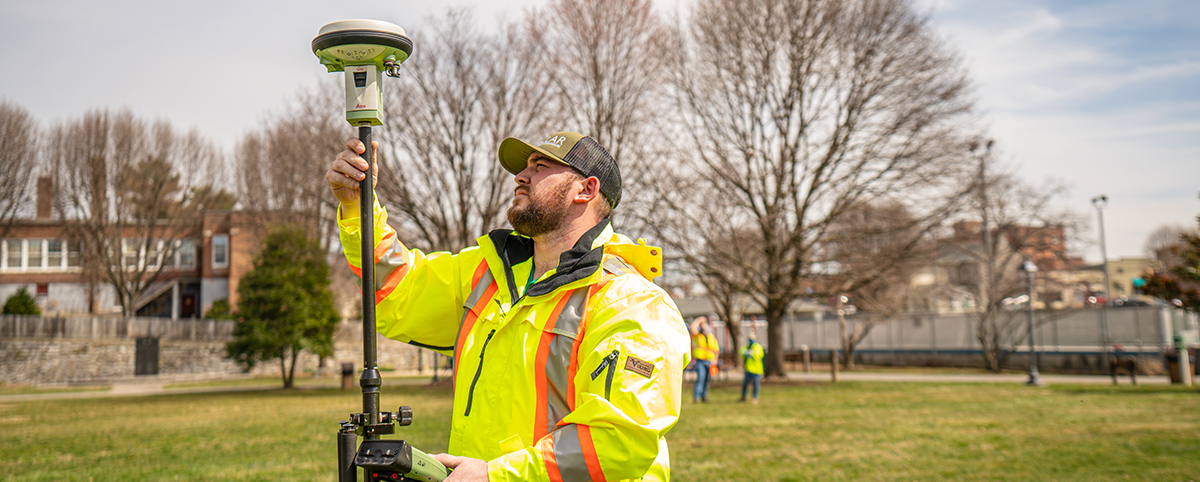“Hey, you there!” “Can I ask what you are doing on my property?!”
Every Land Surveyor at some point in his or her career has heard this very question.
Trespassing as defined by Meriam Webster’s Dictionary is “an unlawful act committed on the person, property, or rights of another, one of these unlawful acts is the wrongful entry on real property prior to or without acquiring permission either verbal or written”. As to the Law of Trespassing in Virginia, it is said to “exist for the sole purpose of protecting rights of owners (or people with lawful control) of property both real and personal”.
For now the Commonwealth of Virginia doesn’t have provisions in the state code that allows land surveyors to enter upon lands that adjoin the property that is the subject of the survey. We simply have to rely upon the willingness on the community to understand and allow us to trespass without the fear of criminal charges. But it doesn’t stop at just criminal charges; upon entering a piece of adjoining land to look for monuments that would allow us to re-establish a missing common corner, we also have to consider civil charges for any possible damage that may occur to the property while we are on it. Trampled landscape, a divot cut in the sod of a well-manicured lawn to expose a property corner, a snipped limb from a tree to improve line of site or an accidentally cut signal line for an underground dog fence. The list is endless and each item of this endless list could be a possible civil charge that could result in serious monetary fines.
Even with verbal or written permission to enter upon land we are not exempt from the possibilities of civil charges for action taken upon these lands that are perceived as damaging.
The biggest misconceptions about preparing a survey is that we only have to survey our client’s land. This isn’t the case. In addition to documenting our client’s boundary lines, title lines, and possession lines we also have to document how these lines interact with the boundary lines, title lines, and possession lines of the adjoining properties. After all that’s what a survey is, a detailed document that reflects how each piece of property interacts with each other and the physical improvements placed upon those lands. And in order to truly paint that accurate picture, well we might need to take a few more than one or two steps over the preverbal line. The vast majority of the time we i.e. land surveyors make every effort to talk with adjoining property owners. It’s this initial contact that would hopefully provide them with the information they seek regarding the reason why we are there in the first place. If this is the case then voila we now have permission to enter upon lands that are not the direct subject of our project. But every once in a while you come upon the situation were the owners are not home, out of town, or simply just not interested in hearing what you have to say. Such is the rights of property ownership and great consideration needs to be taken in regards to those rights.
From my experiences over the past decade and a half as a surveyor I have come to the conclusion that if you have permission to be on the property or you are holding to that old saying “forgiveness later instead of permission now” then treat it as if you do not, really consider what actions you take upon that property. If you cut a divot in someone’s manicured lawn make it as small and neat as possible; if you have to cross a fence either look for a gate or gently cross at a post. Because in the end it’s an all new ball game when that “sweat little ole lady” you just talked to (who just came home from a losing day at bingo) finds out you trimmed her prize winning rose bush back a little too far.

